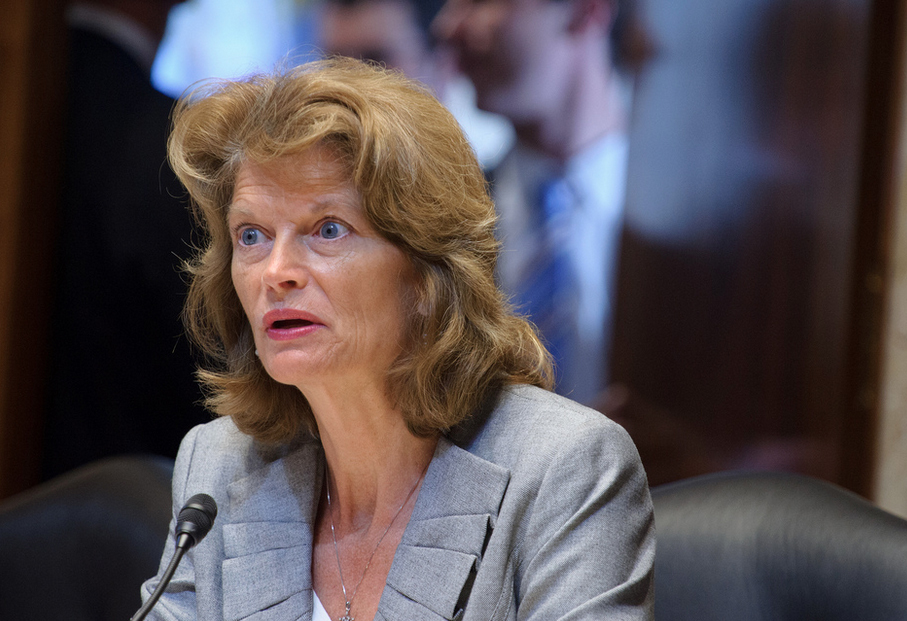WASHINGTON – Native American communities are still woefully behind in reliable access to water, a public health problem that is exposing populations to an array of issues, from personal hygiene to respiratory illness.
In an effort to ensure that the federal government is meeting the needs of tribes, the Senate Indian Affairs Committee on Wednesday held an oversight hearing to examine what still needs to be done to bridge the gap.
“According to the IHS (Indian Health Service), 1 in 10 Native Americans lack access to clean water,” vice chair of the committee, Sen. Lisa Murkowski (R-Alaska), said in her opening statement. “It should shock us as Americans that basic, basic matters, like safe water, basic sanitation are still so unmet in many places.”
Prior legislation seeking to bring access to water in Native communities includes, but is not limited to, water rights settlements. Congress is now examining where money from the Bipartisan Infrastructure Law and Inflation Reduction Act can be spent to address Native communities’ water needs.
Assistant Interior Secretary for Indian Affairs Bryan Newland praised the more than $3.1 billion the administration has allocated for enacted water rights settlements, in which the government intervenes to settle disputes over water rights. Newland also cited the more than $2.2 billion from the Indian Water Right Settlement Completion Fund established by the infrastructure law.
But the lack of water access is particularly acute on Native American reservations, where nearly half of households don’t have access to reliable water sources, clean drinking water or adequate sanitation, said Heather Tanana, initiative lead of the Universal Access to Clean Water for Tribal Communities Project.
Tanana stressed the U.S. government’s responsibility to provide access to clean water on reservations it established, mostly through treaties, as homelands for Native Americans.
“A permanent, livable, and prosperous homeland cannot exist without this minimum requirement of life—access to an adequate and healthful supply of drinking water,” Tanana said in written testimony. “Unfortunately, the federal government has largely failed to fulfill its duty to ensure clean water access for Tribes.”
One other complication has been the U.S. Supreme Court ruling in Arizona v. Navajo Nation on June 22, in which the Navajo Nation asked for a court order requiring the federal government to assess the needs of the Navajo nation and come up with a plan to meet those needs. However, in a 5-4 decision, the Supreme Court determined that the U.S. government has no “affirmative duty” to provide water.
“In other words, the United States does not have to help the Navajo Nation access water it is legally entitled to despite the promise of a permanent and viable home,” said Tanana.
Approximately 30% of Navajo Nation homes lack running water. Crystalyne Curley, speaker of the Navajo Nation Council, emphasized that a lack of access to water isn’t simply about domestic water supply. It also impedes economic development as water is needed to sustain farming, industrial development and municipal development.
While leaders of Native communities thanked lawmakers for previous passed legislation to bring access to water in their communities, they emphasized the need for the U.S. government to reaffirm its trust responsibility to Native communities.
Solutions presented by leaders focused on building capacity, which would allow Native Americans themselves to assess the needs of their own communities. They also pushed for the continuation of the partnership between the federal government and Native communities to enact new laws as well as allocate existing money to aid more Native communities.
“It’s imperative that the federal government remedy harms inflicted, but even more so, just hold up its end of the deal and honor healthy, permanent homelands,” said Tanana.
In a press release after the hearing, Murkowski said the issue requires a “whole-of-government response,” and particularly cited the usually bipartisan Farm Bill, which expires on Sept. 30 and is up for renewal this year, as a way to “optimize tribal water programs and extend the life cycle of tribal water and sanitation infrastructure.”


